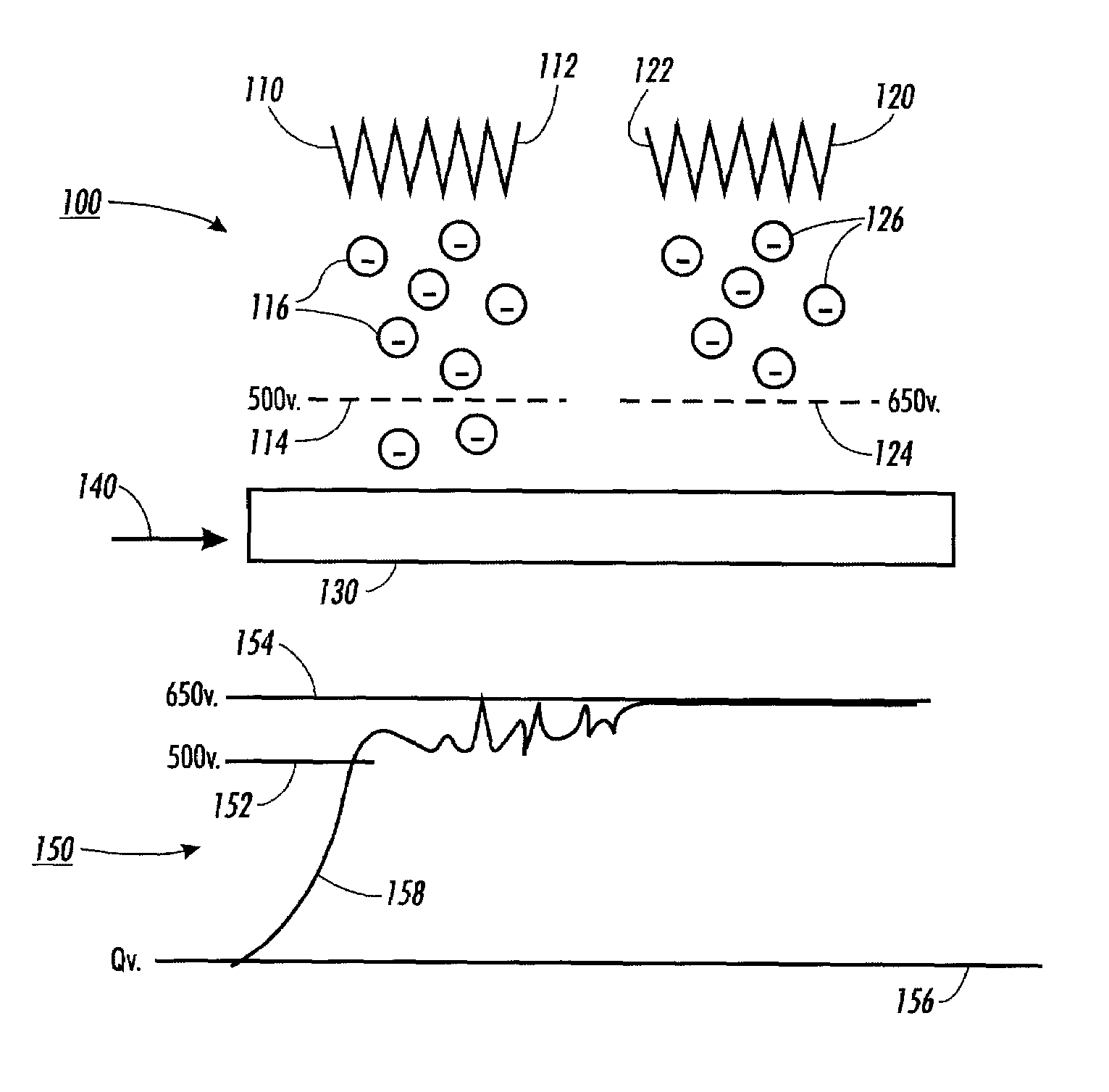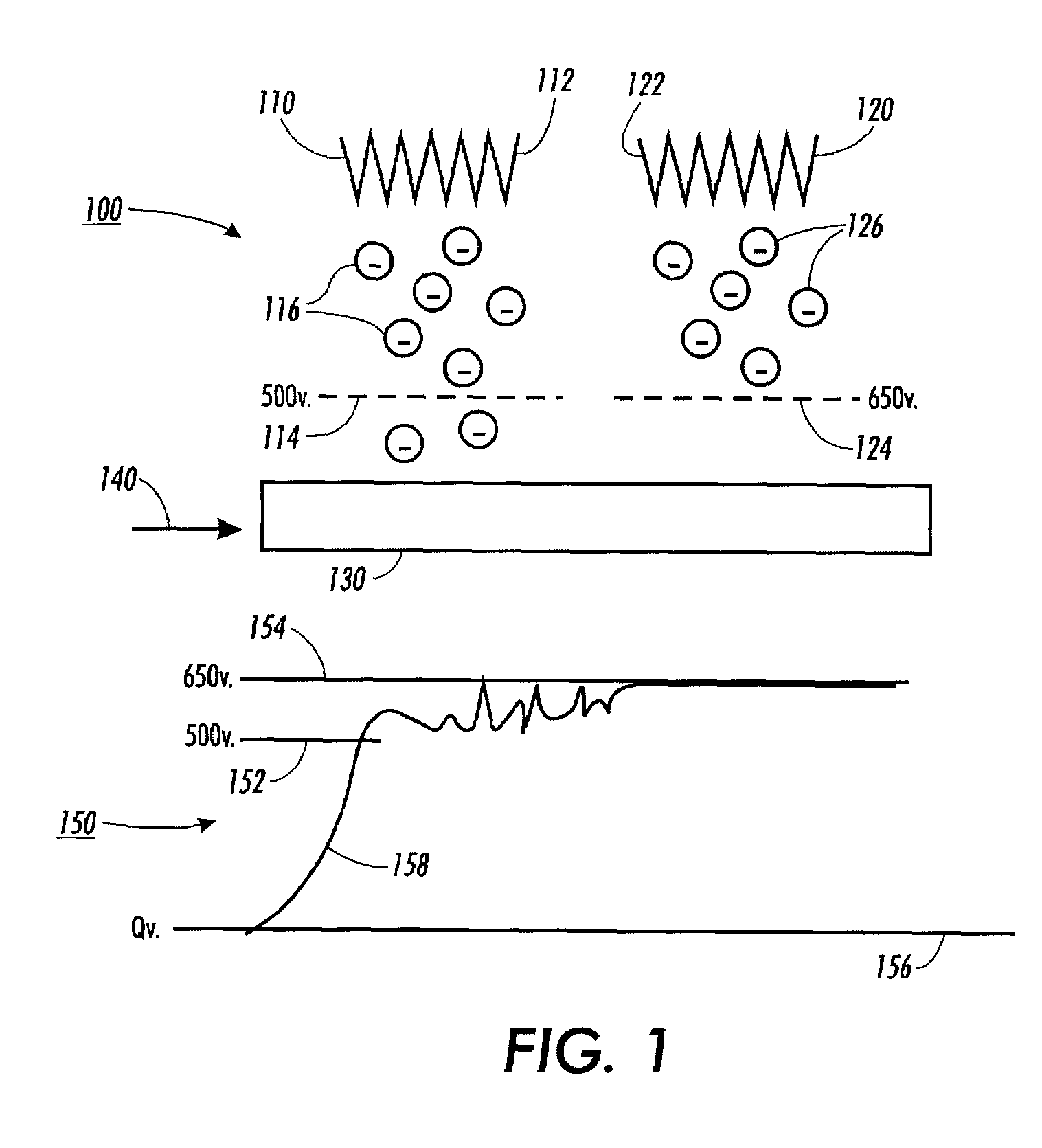Systems and methods for setting up grid voltages in a tandem pin charging device
a technology of charging device and tandem pin, which is applied in the direction of electrographic process apparatus, instruments, corona discharge, etc., can solve the problems of high charge-up requirement, poor charging uniformity of photoreceptor, and high charge-up potential of the second device, so as to improve charging uniformity, improve charging uniformity, and improve the effect of charging uniformity
- Summary
- Abstract
- Description
- Claims
- Application Information
AI Technical Summary
Benefits of technology
Problems solved by technology
Method used
Image
Examples
Embodiment Construction
[0027]FIG. 1 illustrates one exemplary embodiment of a dual pin scorotron system 100 and a graph 150 that illustrates the measured voltage on a photoreceptor 130 as the photoreceptor 130 passes a first charging unit 110 and a second charging unit 120 of the dual pin scorotron system 100. In a typical dual pin scorotron system 100, ions 116 generated from a pin scorotron 112 of the first charging unit 110 are accelerated by a field force past a first grid 114 to reach the photoreceptor 130, thus increasing the surface potential of the photoreceptor 130. When the surface potential V1C of the photoreceptor 130 reaches the same voltage Vgrid1 as the voltage on the first grid 114, there is no electrostatic field between the first grid 114 and the photoreceptor 130. However, since the ions 116 have high residual momentum as they approach the first grid 114 from the first charging unit 110, the ions 116 will continue to penetrate the first grid 114 and build up a space charge. This extra s...
PUM
 Login to View More
Login to View More Abstract
Description
Claims
Application Information
 Login to View More
Login to View More - R&D
- Intellectual Property
- Life Sciences
- Materials
- Tech Scout
- Unparalleled Data Quality
- Higher Quality Content
- 60% Fewer Hallucinations
Browse by: Latest US Patents, China's latest patents, Technical Efficacy Thesaurus, Application Domain, Technology Topic, Popular Technical Reports.
© 2025 PatSnap. All rights reserved.Legal|Privacy policy|Modern Slavery Act Transparency Statement|Sitemap|About US| Contact US: help@patsnap.com



